It’s an interesting time to check in with Vertigo. Founded in 1993, the DC Comics splinter spent two decades as the go-to publisher for readers interested in more “literary” fare than what was offered in your standard capes-and-tights soap operas. Largely stewarded by executive editor Karen Berger (who departed the company in 2013), Vertigo’s initial wave consisted of a handful of relabeled DC titles written by influential, primarily-British creators such as Neil Gaiman, Alan Moore, Peter Milligan and Grant Morrison, and soon expanded to include genre-defining original stories such as Preacher, The Invisibles and Transmetropolitan.
In the years since Vertigo’s debut, the line has undergone numerous changes and focus shifts. “Sub-imprints” like Vertigo Crime have come and gone, bestselling writers like Brian K. Vaughan, Jason Aaron and Scott Snyder have launched careers off of Vertigo successes, and the repurposed DC characters that once made up the bulk of the line have been swallowed back into the DCU proper. Many recent Vertigo series have struggled to find sustainable audiences as creator-owned offerings from Image Comics, BOOM! Studios, Oni Press and other publishers have expand, and the imprint’s current longest running series, Fables, is a few short months away from concluding.
![]()
With Grant Morrison, Chris Weston, and Gary Erskine’s 2002 Vertigo miniseries The Filth arriving in a handsome new hardcover edition this week, Paste took the opportunity to look back at the last 15 years of Vertigo successes. With the sheer diversity of the line, we’ve split the list into ongoings and miniseries/OGNs, arranged in chronological order by start date—these books are just too varied to rank. Time will tell what DC’s move to Burbank and the increasingly competitive creator-owned comic field might mean for Vertigo’s future, but its past successes speak for themselves.
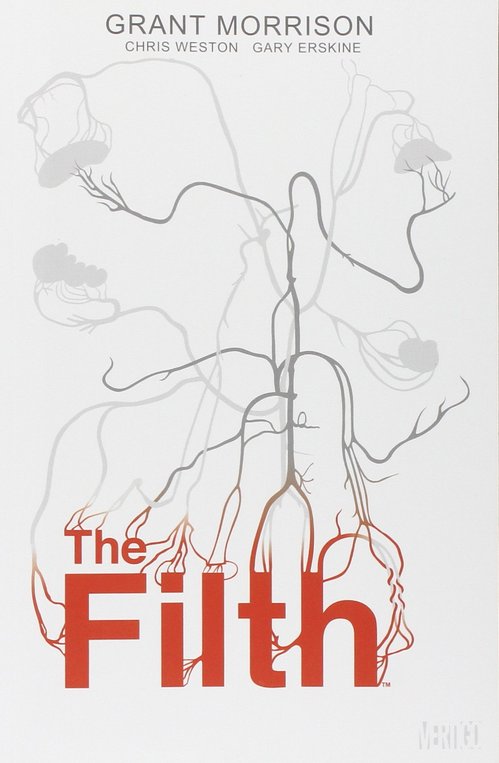
The Filth
Writer: Grant Morrison
Artists: Chris Weston, Gary Erskine
Run Dates: August 2002 – October 2003
Picking Grant Morrison’s best work is an impossible task—just look at how many times he appears on this list—but The Filth stands out as one of the purest examples of his reality-bending narrative style. Detailed, realistic art from Chris Weston and Gary Erskine grounds everything at just the right level of sensory overload. Pitched in an earlier form as a Nick Fury story, and serving as the last in a thematic trilogy with Flex Mentallo and The Invisibles, The Filth follows Greg Freely, a sad bachelor trying to get home and take care of his sick cat. Given that it’s Morrison, Freely soon discovers that he’s a secret agent for a sprawling organization intent on maintaining the status quo. Oh, and there’s also a communist primate assassin.![]()
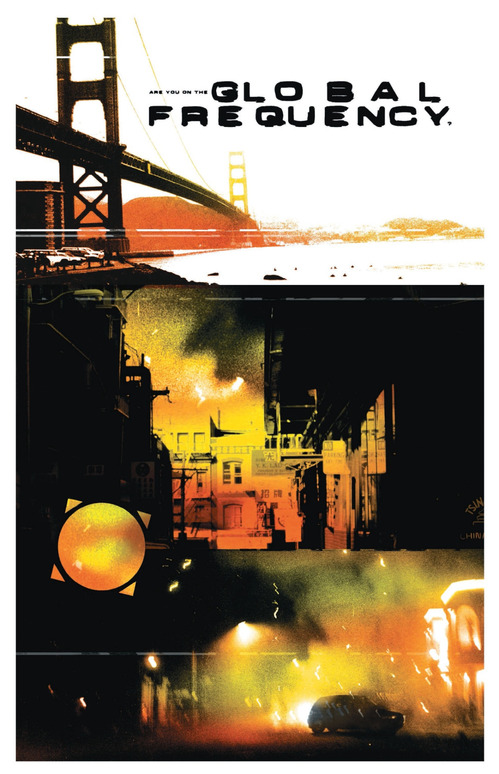
Global Frequency
Writer: Warren Ellis
Artists: Garry Leach, Glenn Fabry, Steve Dillon, Roy Martinez, Jon J. Muth, David Lloyd, Simon Bisley, Lee Bermejo, Tomm Coker, Jason Pearson, Gene Ha
Run Dates: December 2002 – August 2004
Originally published by Wildstorm and collected by Vertigo, Global Frequency is as concise a mission statement for Warren Ellis’ persistent transhumanist anxieties and futurist tech interests as you’re likely to find. Its rotating cast of artists laid the groundwork for Ales Kot’s Zero a few years before Kot could legally buy a drink. Ellis has never been precious about punching out bold concepts and moving on, but it’s clear now that Global Frequency’s network of specialists were called to duty before their time and would be worth revisiting in the post-smartphone, app-heavy modern world. Bonus: the series sported covers by Brian Wood, who would go on to leave a substantial mark on Vertigo as a writer.![]()
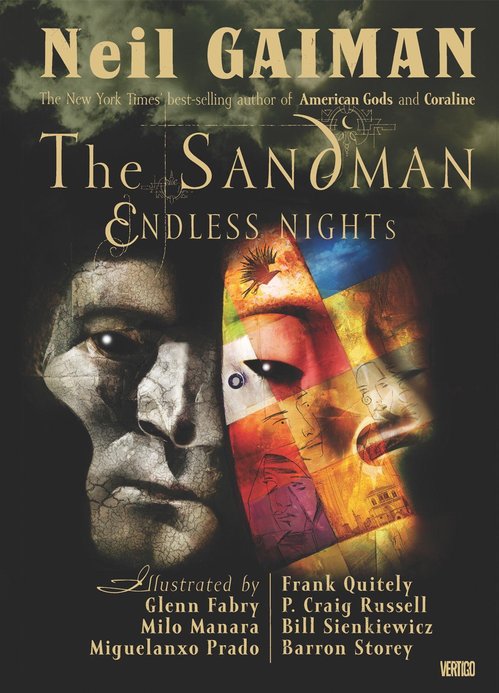
The Sandman: Endless Nights
Writer: Neil Gaiman
Artists: Glenn Fabry, Milo Manara, Miguelanxo Prado, Frank Quitely, P. Craig Russell, Bill Sienkiewicz, Barron Storey, and Dave McKean
Release Date: September 2003
Returning to your most celebrated work rarely meets expectations, but Neil Gaiman, joined by some of the greatest talents in comics, crafted a near-perfect set of standalone tales in The Sandman: Endless Nights. With one story per Endless sibling, each told by a different artist, Gaiman found a way to expand his most famous mythos in a meaningful way without compromising the original series ending. It’s likely that The Sandman: Overture, the long-delayed prequel with visionary artist J. H. Williams III, will reach similar heights once finished and read without six-month gaps between issues.![]()

It’s a Bird
Writer: Steven T. Seagle
Artist: Teddy Kristiansen
Release Date: May 2004
Steven T. Seagle and Teddy Kristiansen’s It’s a Bird is the least likely Superman story you’ll ever read, and probably one of the best, too. Longtime pro Seagle salvaged an aborted pitch for the Big Blue Boy Scout and realized it as a deeply personal reflection on his family’s history of genetic illness, as well as Superman’s changing relationship to those he protects. Kristiansen, Seagle’s artistic collaborator on the gorgeous late-nineties Vertigo series House of Secrets, rightly took home an Eisner for his ethereal painted interiors. Writers often struggle with how to make Superman relevant, but few turn that struggle into something of value on its own.![]()

Seaguy/Seaguy: Slaves of Mickey Eye
Writer: Grant Morrison
Artist: Cameron Stewart
Run Dates: July 2004 – September 2004/ June 2009 – August 2009
Seaguy first arrived during a fruitful period for Grant Morrison that also produced We3 and Vimanarama (which just narrowly missed this list but deserves much more attention than it has ever received). Given the gaps between volumes and the years since Slaves of Mickey Eye, it seems entirely uncertain whether we’ll ever see the concluding chapter in this planned trilogy. It seems fitting, though, that the project Morrison once called his Watchmen would remain oblique, challenging and unfinished. Ostensibly about a hero without any hero-ing to do in a world where all the bad guys have seemingly gone away, Seaguy’s actual plot sounds like a Mad Lib on LCD and ends up critiquing capitalism, commercialism and the necessity of super heroes. Sunny, precise work from Cameron Stewart nails the whimsical surface and the grimy tragedy lurking underneath. All hail Mickey Eye. ![]()
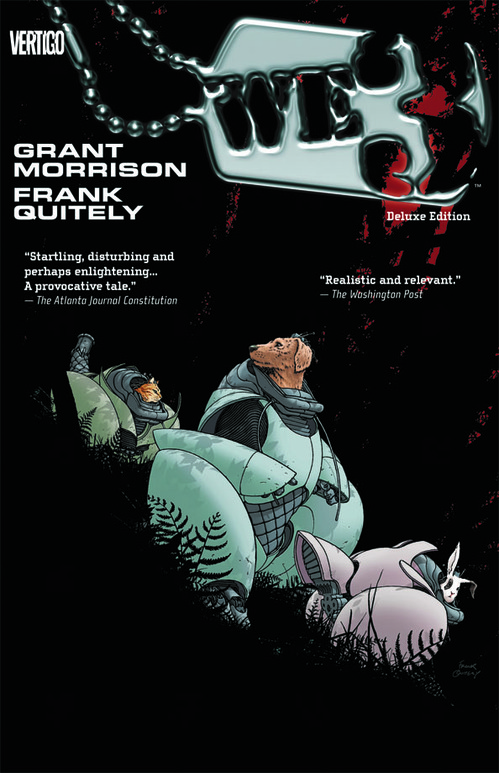
We3
Writer: Grant Morrison
Artist: Frank Quitely
Run Dates: October 2004 – March 2005
Grant Morrison and frequent collaborator Frank Quitely’s “western manga” We3 is a devastating emotional gut punch that works in part because of how little Morrison interferes with it. These three issues are a natural extension of the critter-loving writer seen in Animal Man and The Filth, but so much of his trademark writing is restricted to brilliantly choppy animal thought-language. This marks Quitely’s beautifully violent explosion from a superstar artist into an untouchable class of his own. Ten years have passed and the experimental layouts in We3 still feels as fresh and frenetic as they did on release day—if you can stop sobbing long enough to see the pages. Anyone who claims they can read We3 without even a single tear lacks the capacity to feel. Gud dog. Gud. Dog.![]()
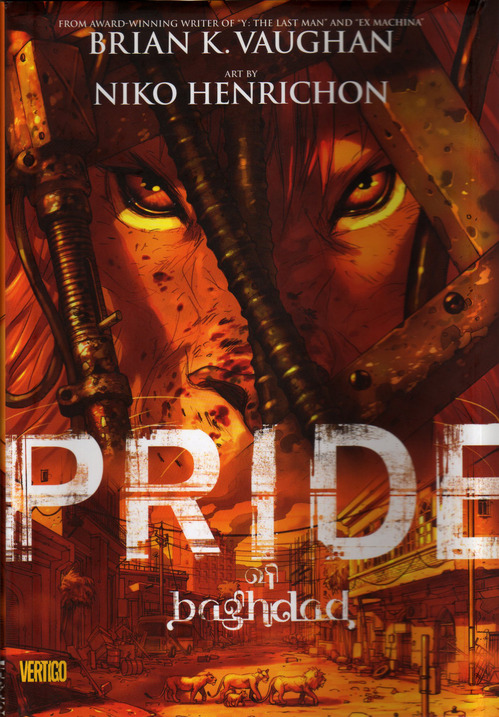
Pride of Baghdad
Writer: Brian K. Vaughan
Artist: Niko Henrichon
Release Date: September 2006
Creators will be telling human stories about the Iraq War for decades to come. Brian K. Vaughan and Niko Henrichon were among the first to tell it from an animal’s perspective. Taking the brief real-life escape of an African lion pride from the Baghdad Zoo after a U.S. bombing raid, Vaughan and Henrichon skillfully build on our natural empathy toward animals and the contemporary debate over the morality of war, using the lions to subtly express different stances on America’s actions in the Middle East. The animals are given human personalities and can speak to one another, but it’s far from Disney material. There is no simple villain to overcome, Henrichon spares no violence (that poor Giraffe), and, as is too often true in the real world, there’s no tidy, happy ending around the corner. Animal lovers tread cautiously.![]()
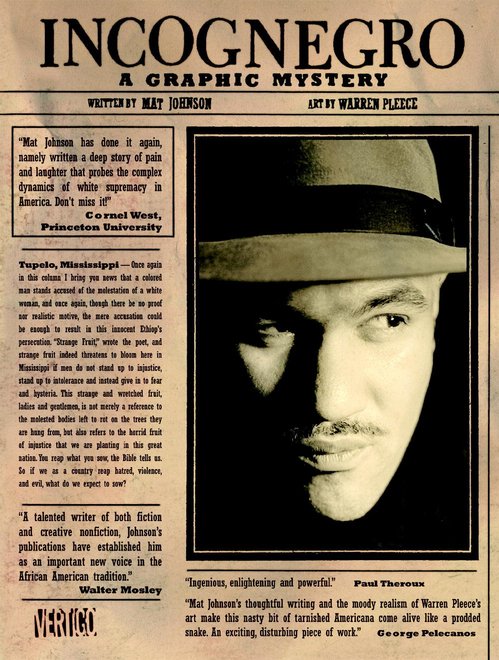
Incognegro
Writer: Mat Johnson
Artist: Warren Pleece
Release Date: February 2008
Mat Johnson and Warren Pleece’s Incognegro received a lot of mainstream press in response to its unflinching look at one of this country’s most racist periods (and one that increasingly feels too familiar eighty years later). A light-skinned reporter for a black newspaper goes “undercover” as a white man to attempt to clear his brother’s name of a brutal crime before he meets the noose-end of Mississippi mob violence. Fleece’s sparse, stark black and white linework fits the subject matter and its ambiguities perfectly. Johnson got his Vertigo start in a very traditional way for the imprint: a Hellblazer spinoff. Something about working in John Constantine’s world often promises great things ahead.![]()
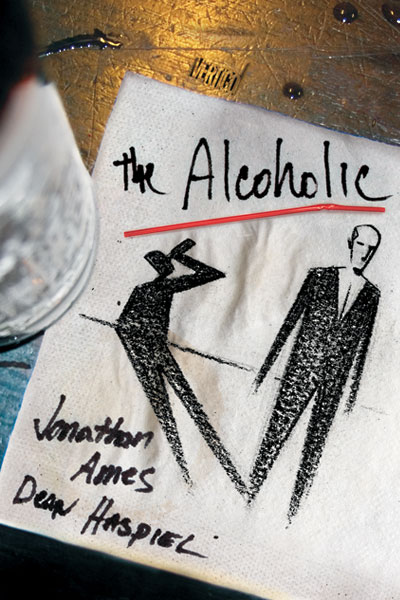
The Alcoholic
Writer: Jonathan Ames
Artist: Dean Haspiel
Release Date: October 2008
Midway through the last decade, Vertigo began branching out more aggressively into original graphic novels wholly unrelated to the dark fantasy genre most associated with the imprint. Novelist Jonathan Ames’ mostly biographical rumination on his struggles with alcoholism, writing, and love, brought to life by Dean Haspiel (also of Harvey Pekar’s excellent Vertigo offering, The Quitter) was one of the best results. With nary a supernatural element in sight, Vertigo proved it could publish affecting, literary standalone works at the same level as Pantheon and other boutique imprints at traditional publishers. Also: the creative duo would later be immortalized by Jason Schwartzman and Zach Galifianakis in the HBO comedic noir, Bored to Death. ![]()
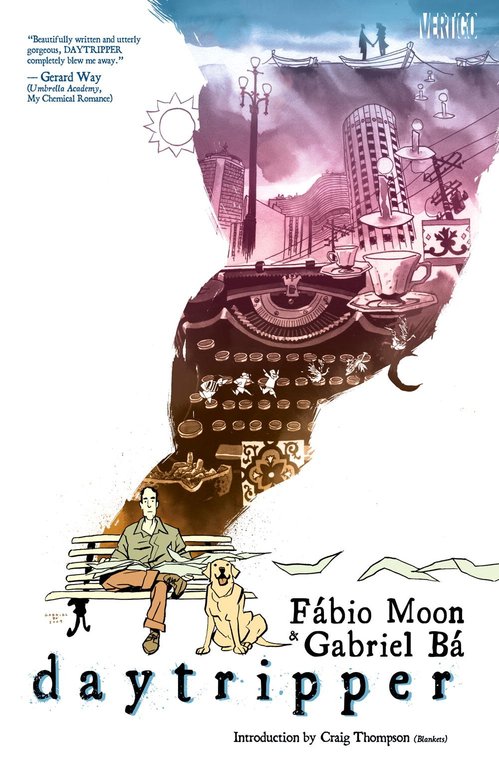
Daytripper
Writers/Artists: Fábio Moon and Gabriel Bá
Run Dates: February – November 2010
Brazilian twins Fábio Moon and Gabriel Bá made a name for themselves in the States alongside gonzo writing from Matt Fraction (Casanova) and Gerard Way (The Umbrella Academy), but Daytripper’s eight elegiac issues proved to American audiences that their storytelling skills didn’t end with the visual side things. In each issue, Bras de Olivias Dominguez lives and dies in a different way, unrelated to the deaths that have come before, but there’s no time travel or supernatural threat—just a man, living. The scope is personal, and brings to mind a famous Neil Gaiman quote from an earlier Vertigo period: “You lived what anybody gets… You got a lifetime. No more. No less.”![]()
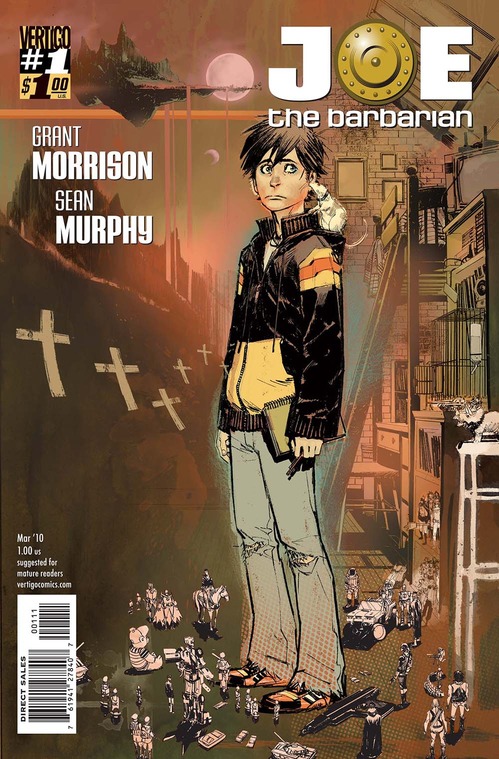
Joe the Barbarian
Writer: Grant Morrison
Artist: Sean Gordon Murphy
Run Dates: March 2010 – May 2011
Joe the Barbarian may have spooked some Morrison fans. Arriving in the middle of a complex, occasionally confusing period of DC superhero work from the writer, Joe is a relatively straightforward story about a diabetic boy’s low blood sugar plunging him into an imagined fantasy world. The distance across his house to a potentially life-saving soda suddenly widens into a battle against King Death himself. Sean Gordon Murphy brings one of Morrison’s most directly human and touching works to scratchy life, and has a ton of fun integrating Joe’s real-life toys into his fantasy world’s “reality.” It’s one of the smallest, most intimate stories either of these creators has ever told, and exactly the kind of fantasy epic you’d want to see from the consistently surprising Morrison.![]()
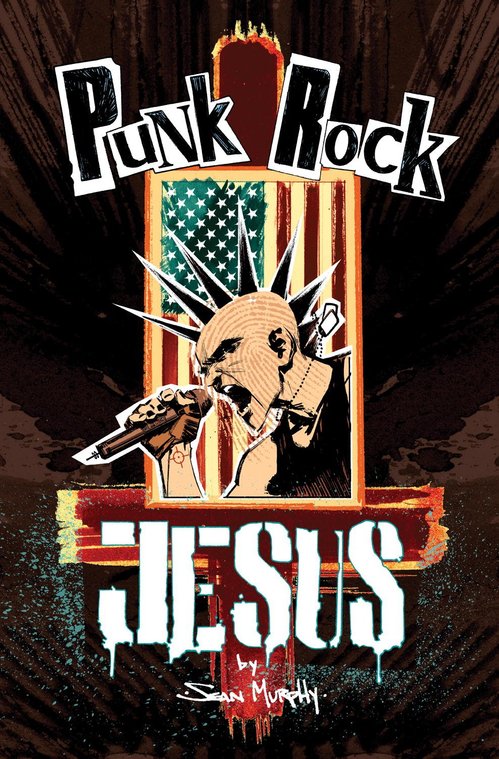
Punk Rock Jesus
Writer/Artist: Sean Gordon Murphy
Run Dates: July 2012 – January 2013
Murphy has long had a reputation for speaking his mind, so it must have come as no surprise that his first major written work would be about the confrontational second coming of an angry Jesus clone. The shock, then, is just how good a writer the blockbuster artist, showcased here in bold black and white, turned out to be. Murphy has collaborated with some of the biggest names in the industry—he’s also on this list for projects with Grant Morrison and Scott Snyder, after all—but Punk Rock Jesus proved he can go it alone, too. ![]()
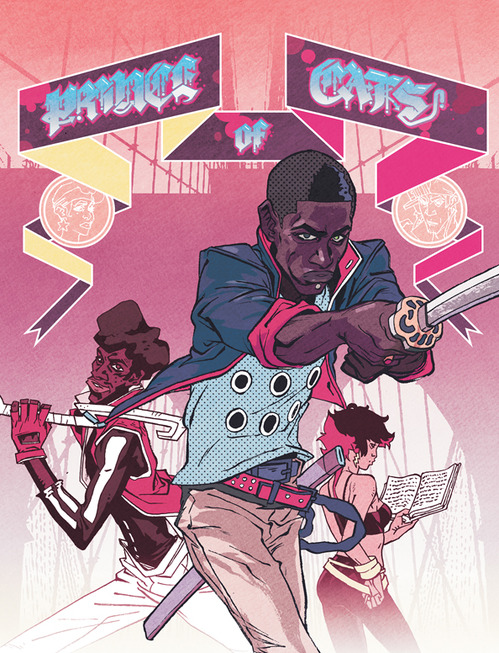
Prince of Cats
Writer/Artist: Ronald Wimberly
Release Date: September 2012
Ronald Wimberly’s Coney Island-with-ninja-swords retelling of Romeo and Juliet is bold. A Hellblazer spinoff alum and artist on Vertigo’s 2007 Sentences: The Life of M.F. Grimm, Wimberly displays complete confidence in rearranging Shakespeare’s familiar tale and interpreting the dialogue for a young, predominantly black cast—all while maintaining iambic pentameter. Wimberly wears his influences proudly but has interpreted them into something all his own. If his Twitter is to be believed, we should be seeing a lot more original work from this artist soon.![]()
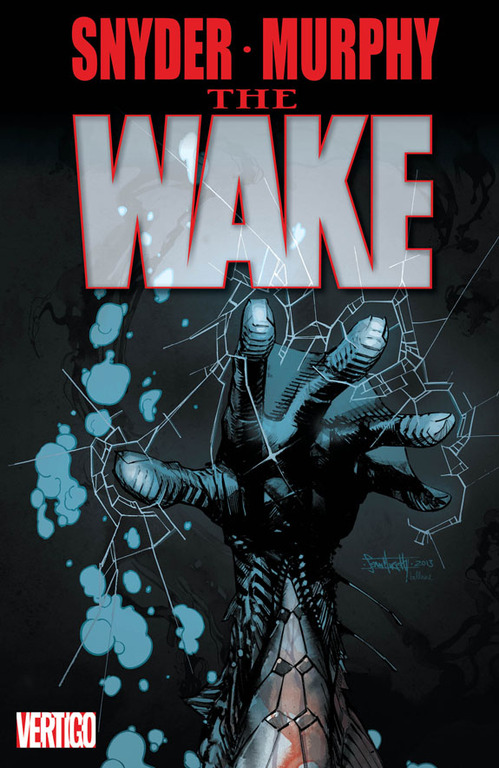
The Wake
Writer: Scott Snyder
Artist: Sean Gordon Murphy
Run Dates: May 2013 – July 2014
Had The Wake been only its first or second half, it’d still be an accomplishment. But creators Scott Snyder and Sean Gordon Murphy weren’t interested in such a straightforward telling, and what begins as a claustrophobic horror story deep under the ocean opens up midway into a post-apocalyptic, balls-out action/science-fiction assault on the senses. Snyder is at his best when working with themes of family and legacy, and Murphy’s ink-heavy work captures the oppressive depths and the well-worn future. It makes sense that Snyder could make vampires and witches scary again, but who thought he’d do the same for mermaids?![]()

Trillium
Writer/Artist: Jeff Lemire
Run Dates: August 2013 – April 2014
If there was any fear that shifting to superhero comics would dull Jeff Lemire’s creator-owned sensibilities, this Eisner-nominated science-fiction love story proved that the he can fire on both cylinders at a level few creators can match. Following a romance between a WWI vet in 1921 and a botanist in 3797, Trillium took Lemire’s rustic, Earthy style and plopped it into a drastically different world than the cataclysmic Canada of Sweet Tooth or the small-town drama of The Nobody. Lemire has most recently popped up at Marvel, Dark Horse and Image. If Trillium was his last hurrah at Vertigo for a while, it was a hell of a way to go out.